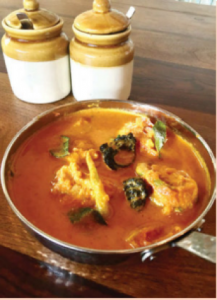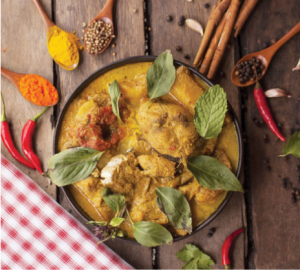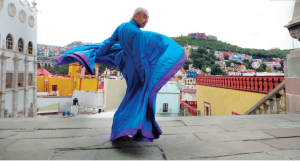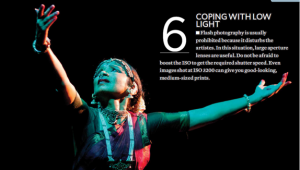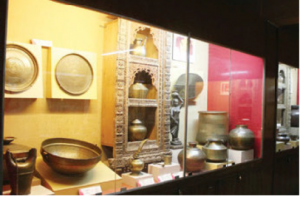THERE IS AN AMAZING VARIETY OF RED CHILLIES AVAILABLE LOCALLY AND THEIR TASTE AND SPICE LEVEL VARY, MAKING THIS EASILY ONE OF THE MOST EXCITING SPICES TO WORK WITH IN…
THERE IS AN AMAZING VARIETY OF RED CHILLIES AVAILABLE LOCALLY AND THEIR TASTE AND SPICE LEVEL VARY, MAKING THIS EASILY ONE OF THE MOST EXCITING SPICES TO WORK WITH IN THE INDIAN KITCHEN.
WHAT IS COMMON TO BHUT JOLOKIA, Byadagi, Bird Eye, Jwala, Guntur and Kanthari? All of them are varieties of red chilli – the spice you may love or hate but can never ignore. “Chillies are integral to Indian cooking and most of us Indians have developed stomachs of steel having grown up eating chillies. Used in almost every dish, it’s a major commercial cash crop in our nation and though the chilli arrived in India only in the 16th century, it has now become synonymous with our cuisines,” says Swadeep Popli, Owner, The Chatter House, New Delhi.
Red Chilli is mostly used in three forms: fresh red, dried red and powdered red. Kashmiri chillies are mild and therefore one of the most popularly used variants across the country. “Guntur chillies from Andhra Pradesh add heat due to their high spice quotient. Dhani or Bird Eye chillies from North India are commonly used for cooking, pickling and in the preparation of chutneys. Naga chillies are one of the hottest in the world. Mundu chillies from Tamil Nadu and Andhra Pradesh enhance flavour. Jwala chillies from Gujarat are a very popular variant and are used extensively in home-style cooking. The unique and flavoursome Kanthari chillies from Kerala are pale when ripe and mature. Karnataka’s Byadagi dry chillies are long and thin, and are very similar to paprika,” says Chef Subrata Debnath, Executive Chef, Vivanta by Taj – Gurgaon. Sunil Agarwal, Director, Kraft Appliances, adds, “Punjabi and Rajasthani cuisines are well-known for their spicy food and using red chillies in abundance. Red chillies are dried or pickled in order to store them for a longer period of time. They are also used extensively for making sauces which are used to add spice to other dishes.”
India is the largest producer of red chillies in the world besides being the largest exporter and consumer of the same. “Andhra Pradesh is the largest producer of chillies in India with more than five of the 18 to 20 chilli types in India as identified by The Spices Board of India. Our country boasts of multiple regional cuisines and the food taste varies literally from one state to the other. So, depending on the state cuisine, the chillies are used accordingly,” says Chef Ravi Saxena, Corporate Chef, Dhaba By Claridges, which operates restaurants in Bengaluru, Gurgaon and Hyderabad.
Apart from being used as a tempering, there are several dishes that use red chillies as the main ingredient like Rajasthani Lal Maas, Awadhi Mirchi Korma and Goan Pork Vindaloo. Satyajit Kotwal, GM, The Resort Hotel, Mumbai, explains, “Chillies are used widely for pickling purpose. Whole/chopped red as well as green chillies are used along with other spices to make them into delicious pickles. Also, dishes are made using whole chillies – it could be Mirch ka Salan or Mirch ka Pakoda.”
India cooks with chillies that have always been known as ingredients that add spice to Indian food. “In ready-to-eat salads, chaats or chutneys, fresh red chillies give a great aroma and taste. However if my recipe calls for cooking chillies then I prefer using powdered option when I need velvety texture in my curries and crushed dry chillies when using for tempering or making a dry preparation,” says Chef Akshay Nayyar, Co-owner, Kopper Kadai, Bengaluru.
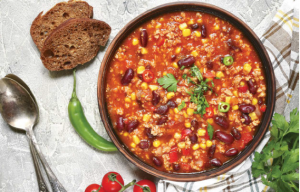
Most of them are fiery in nature but chillies score high on their health benefits. This is primarily due to a chemical called capsaicin. This chemical is well-known for its anti-inflammatory, analgesic, and heart-healthy benefits. “Also, chillies are rich in antioxidant carotenes and flavonoids – they have about twice the amount of vitamin C found in most citrus fruits. The heating nature of chillies is associated with their ability to stoke the digestive fire so chilli powder is often added to buttermilk and consumed to boost appetite and strengthen digestion. They are great for speeding up the metabolism and thus, would be really helpful to those trying to lose weight,” says Shivangi Chatterji, an Ayurvedic Expert at AllAyurveda.com.
If you have a headache due to cold, mix a little chilli paste with sandalwood paste to make a fast-acting, pain relieving poultice. Diabetics can benefit from this spice by mixing a few drops of chilli oil with isabgol (psyllium husk) and consuming it twice a day. This also helps those with bacterial infections such as UTIs. Navin Kacherla, owner of The Charcoal Kitchen, Mumbai, avers, “A good quantity of red chillies added to food can be a good source of Vitamin C. However, an excess of it can cause acidity and heart burn. Indian food without red chilli often misses the essence of flavours required.” Tanu Arora, Head of Department, Clinical Nutrition and Dietetics, Aakash Healthcare, adds, “Red chillies have rich contents like Vitamin C and Provitamin A. It also helps in clearing the congestion of stuffed noses and congested lungs.”
Chillies are the heart and soul of different cuisines across India – they are cultivated in different parts of the country, and are one of the most important ingredients in Indian recipes. “Fresh green or red chillies are used in salads and pickles and are also ground to a paste, for various marinades. Dried and roasted red chillies are commonly used for tempering curries while the ground red chili powder is used to enhance flavours of curries,” says Chef Saurabh Udinia, Chef de Cuisine – Modern Indian, Massive Restaurants Pvt. Ltd.
Chillies are known as the queen of spices and have a lot more to offer apart from just adding spices. Executive Chef Anil Dahiya, The Bristol Hotel, Gurgaon, advises, “Each palate has a distinct level of tolerance for spice; use your judgment to increase or reduce the quantity of chilli pepper in your food as suited to you and your family. Children don’t have a well-developed spice palate; like all other foods, it helps to introduce spices in small amounts from a young age to build their liking for flavours.”
Excessive usage of red chillies can not only make a dish unfit but can also become bitter and excessively spicy if overused. Chef Paul Kinny, Shizusan Shophouse & Bar, Mumbai, advises, “While making red chilli paste, add vinegar instead of water as this will increase the shelf life and add a tangy taste to the paste. While tempering the chilli be careful not to burn it as it could ruin the entire dish.”
Vikas Kumar, Executive chef, Flurys, Park Street, Kolkata, adds, “One of the most important things to understand about red chilli is the fact that it can vary a lot in its hotness/ spiciness and must be used with extreme care and restraint. There really is no way to balance a dish that has turned to be too spicy due to the use of the chilli and there is also no way to add extra chilli once a dish is ready, since it requires a certain cooking technique.”
Chef Milan Gupta, Cafe Haqq Se, Mumbai, has the final word when he says, “Never add too much chilli in the beginning in the recipe as the oil released from it will take some time before it permeates evenly through the dish.”
 Our ongoing series in which we look at various Indian cities through the eyes of SpiceJet staffers. This month,Khushboo Gautam, Cabin Crew, holds forth on Jaipur.
Our ongoing series in which we look at various Indian cities through the eyes of SpiceJet staffers. This month,Khushboo Gautam, Cabin Crew, holds forth on Jaipur.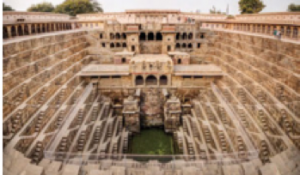 Best places to hang out: There is an open air restaurant called Padao in Nahargarh. When the weather is perfect, you can get an amazing view of Jaipur city from here, especially during the night time. Local attractions: The best tourist attractions in Jaipur that I can reel off right away are HawaMahal, City Palace, Nahargarh Fort, Sisodia Rani Garden, JalMahal, Amber Fort, Jaigarh Fort and Nahargarh Sanctuary. Each is unique in its own way and has made a mark on the world tourism map.
Best places to hang out: There is an open air restaurant called Padao in Nahargarh. When the weather is perfect, you can get an amazing view of Jaipur city from here, especially during the night time. Local attractions: The best tourist attractions in Jaipur that I can reel off right away are HawaMahal, City Palace, Nahargarh Fort, Sisodia Rani Garden, JalMahal, Amber Fort, Jaigarh Fort and Nahargarh Sanctuary. Each is unique in its own way and has made a mark on the world tourism map.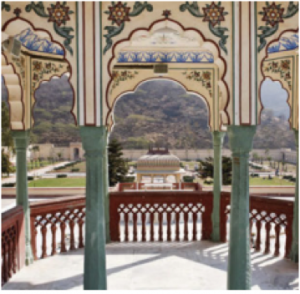 The people of Jaipur: There’s still a lot of bonding between neighbours — you can catch up with them over evening tea. Children help out during weddings, festivals and family functions. Overall, people here are helpful and down-toearth. Jaipur when compared to other cities: I come from a defence background, and hence have visited and stayed in a lot of places like Hyderabad, Kolkata, Chandigarh, Pune and Kota. But Jaipur is the gem of India
The people of Jaipur: There’s still a lot of bonding between neighbours — you can catch up with them over evening tea. Children help out during weddings, festivals and family functions. Overall, people here are helpful and down-toearth. Jaipur when compared to other cities: I come from a defence background, and hence have visited and stayed in a lot of places like Hyderabad, Kolkata, Chandigarh, Pune and Kota. But Jaipur is the gem of India
